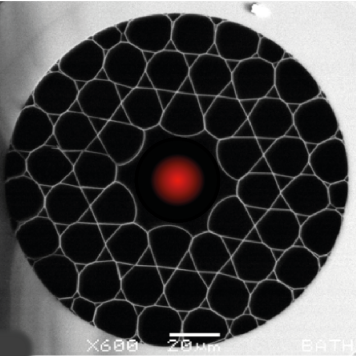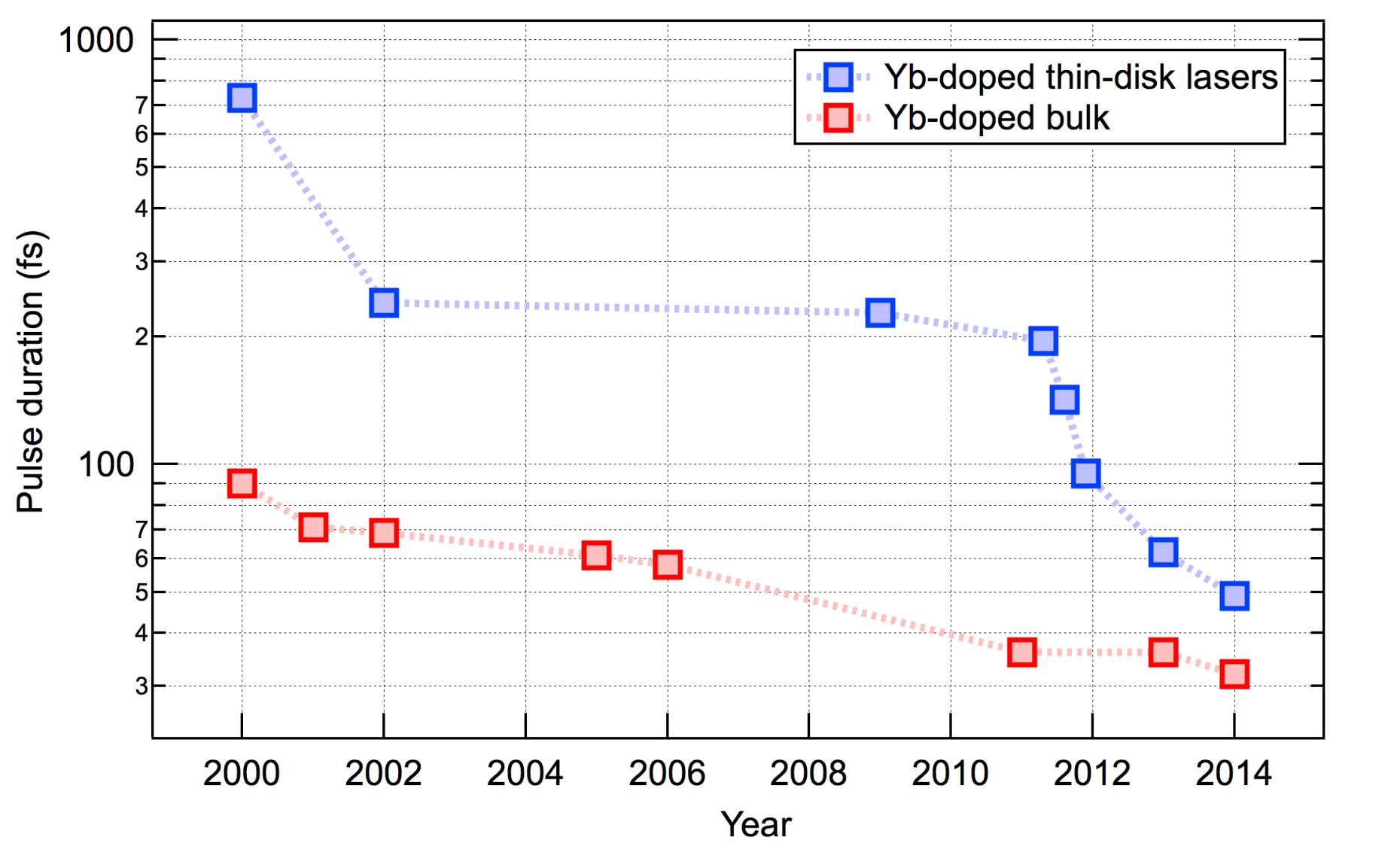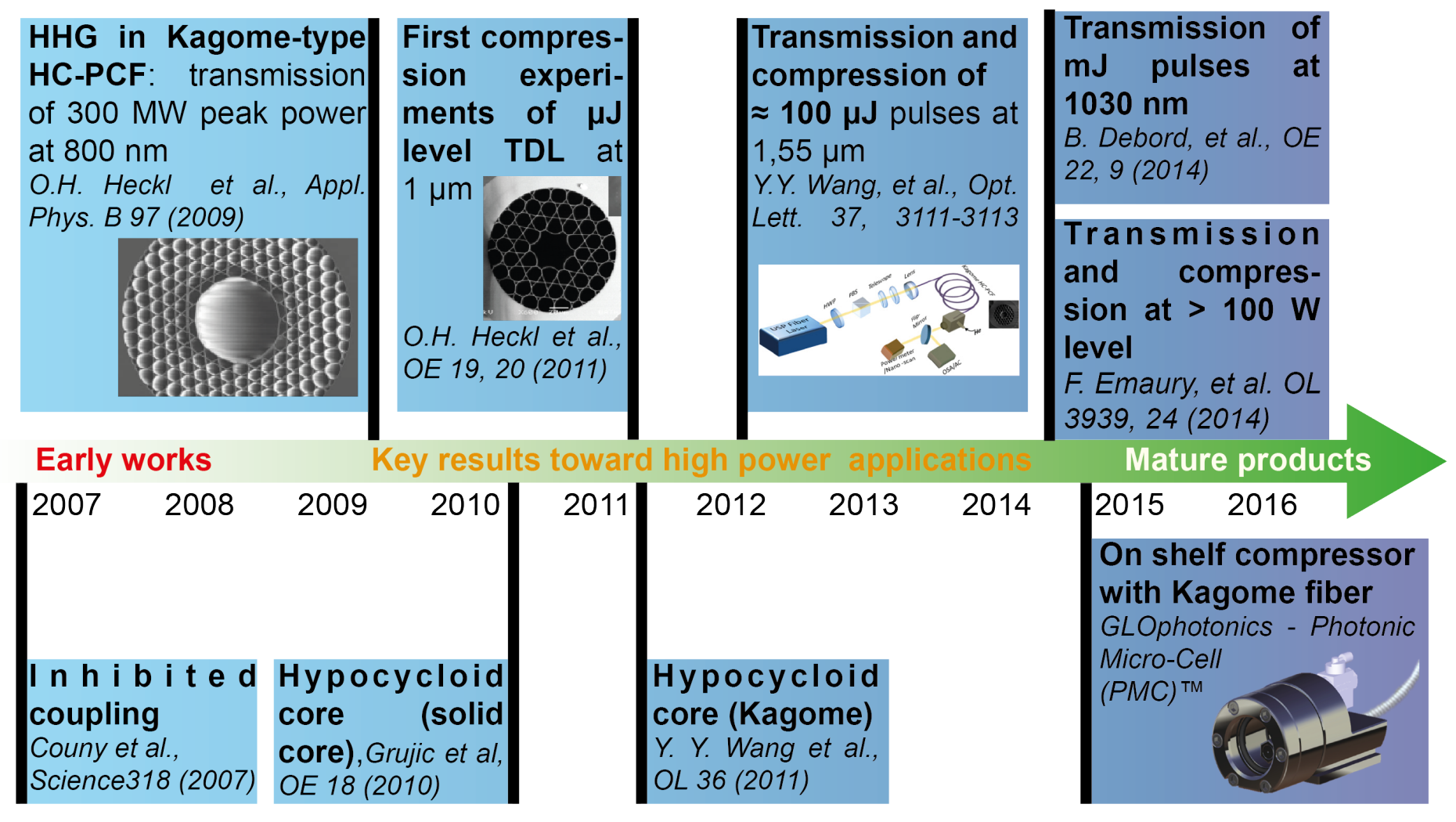Scaling to sub-100 fs
Option 1: Laser material with broader bandwidth
Option 2: External pulse compression
Laser materials for short pulses from high-power TDLs
Current state-of-the art TDLs only reach highest average power and pulse energy at the expense of "long" pulse durations (several hundreds of femtoseconds). See trade-off in overview from March 2016. This is typically not sufficiently short for most targeted experiments, for example in strong-field physics. Therefore, reaching shorter pulse durations from high-power modelocked TDLs is currently an ongoing topic of investigation.
The main reason for this trade-off power/pulse duration is the limited availability of gain materials with broad gain bandwidth that are suitable for the thin disk geometry. So far, the most commonly used gain material for TDLs is Yb:YAG, which has however a limited emission bandwidth. Many other materials with the potential to outperform Yb:YAG in this respect are currently being investigated such as the Yb-doped sesquioxide materials or other materials such as Yb:CALGO. For an overview of the performance achieved in latest results, see our overview section.
Pulse durations well below 100 fs have been domstrated from modelocked TDLs (external page "62-fs Pulses from a SESAM Modelocked Yb:CALGO Thin Disk Laser"- Download Download (PDF, 559 KB)), however at moderate average power. In the near future, thanks to improvements in the quality of novel gain materials, we believe the state-of-the art performance of high-power and high-energy TDLs will be extended well into the sub-100fs pulse duration regime.
Recent review articles and literature
Search and requirements for the "best" laser material (2009)
external page "High-power ultrafast thin disk laser oscillators and their potential for sub-100-femtosecond pulse generation" - Download Download (PDF, 790 KB)
Overview of Yb-doped sesquioxide TDLs (2011)
external page "Yb-doped mixed sesquioxides for ultrashort pulse generation in the thin disk laser setup" - Download Download (PDF, 721 KB)
First sub-100-fs TDL (2012)
external page "Sub-100 fs pulses from a SESAM-modelocked thin-disk laser" - Download Download (PDF, 382 KB)
Further pulse duration scaling down to 62 fs using Yb:CALGO (2013)
external page "62-fs Pulses from a SESAM Modelocked Yb:CALGO Thin Disk Laser" - Download Download (PDF, 559 KB)
First 10-MW peak power result (2017)
Download "Peak-power scaling of femtosecond Yb:Lu2O3 thin-disk lasers" - Download (PDF, 6.1 MB)
More results given in our Thin Disk Overview
External pulse compression of high-power TDLs

A possible avenue to reach sufficiently short pulse durations is to temporally compress the output of our high-power TDLs. Together with the external page group of Fetah Benabid in Limoges, France, we have pioneered pulse compression at high average power using gas-filled Kagome-type hollow-core photonics crystal fibers.
Kagome-type hollow-core PCFs provide an outstanding combination of low-loss guiding, low dispersion and extremely high damage threshold, making them the candidate of choice for pulse compression of our TDLs with tens of megawatts of peak power and hundreds of watts of average power.
In our most recent result external page "Efficient spectral broadening in the 100-W average power regime using gas-filled kagome HC-PCF and pulse compression" - Download Download (PDF, 480 KB), we have demonstrated compression of a TDL at 100 W of average power and 20 uJ pulse energy down to sub-100 fs pulse durations with >80% power efficiency. The achieved performance allowed us to use this system as a driving source for high-harmonic generation at MHz repetition rate.
Recent articles
First demonstration of pulse compression using Kagome-type HC-PCF: external page "Temporal pulse compression in a xenon-filled Kagome-type hollow-core photonic crystal fiber at high average power" - Download Download (PDF, 1 MB)
Compression of a TDL down to sub-50 fs: external page "Beam delivery and pulse compression to sub-50 fs of a modelocked thin-disk laser in a gas-filled Kagome-type HC-PCF fiber" - Download Download (PDF, 1.5 MB)
Pulse compression at 100 W of average power: external page "Efficient spectral broadening in the 100-W average power regime using gas-filled kagome HC-PCF and pulse compression" - Download Download (PDF, 480 KB)
Recent spotlight article external page "Hollow-core photonic crystal fibers for high-power, ultrafast lasers"

